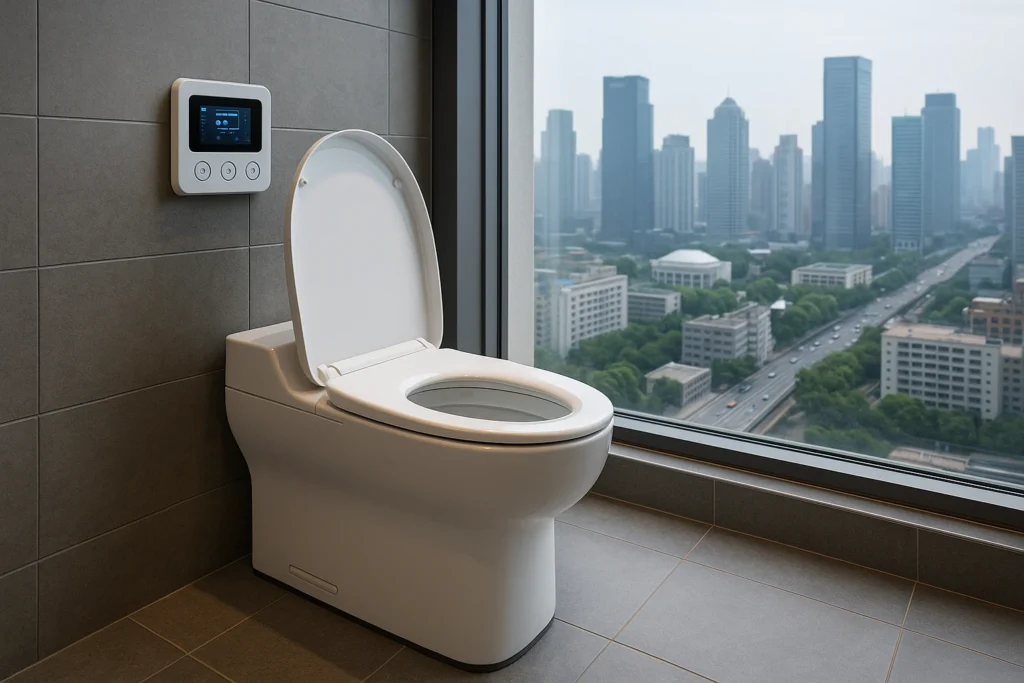A Crisis That Changed Everything
The year was 2018 when Capetonians stood in lines stretching around city blocks, their plastic containers waiting to be filled from emergency water trucks. The world watched as South Africa’s second-largest city came perilously close to becoming the first modern metropolis to run completely dry. “Day Zero” – the day when municipal taps would be shut off – loomed just weeks away. The crisis forced an uncomfortable truth into the open: our most basic sanitation systems were fundamentally unsustainable.
Among the emergency measures implemented during those tense months, one solution stood out as particularly radical yet obvious – the widespread installation of waterless toilets in public buildings. What began as a stopgap measure has since blossomed into a global movement that’s quietly revolutionizing urban infrastructure.
The Staggering Cost of Flushing
Water Waste on an Unthinkable Scale
Every day around the world:
- 141 billion liters of clean, treated drinking water disappear down toilet bowls
- That’s enough water to meet the daily needs of 500 million people
- In water-stressed regions like California and Spain, toilet flushing accounts for nearly 30% of household water use
Dr. Elena Rodriguez, a water systems engineer at MIT, puts it bluntly: “We’re taking water purified to drinking standards, using it once to transport waste, then spending enormous energy to clean it again. It’s the most absurd system we’ve ever designed.”
The Hidden Infrastructure Crisis
Our flush-based sanitation systems face multiple threats:
- Aging pipes – Many cities lose more water through leaks than they deliver to homes
- Overloaded treatment plants – Growing urban populations strain century-old systems
- Climate vulnerability – Droughts reduce water supplies while floods overwhelm sewers
The 2022 United Nations Water Report warned that without radical changes, two-thirds of global cities will face severe water shortages by 2035.
The New Generation of Dry Sanitation
1. Advanced Composting Systems
Modern composting toilets bear little resemblance to the smelly outhouses of old. Today’s models use:
- Precision aeration systems that accelerate decomposition
- Microbial inoculants to eliminate odors
- Automated mixing for consistent breakdown
In Stockholm’s newest eco-district, these toilets have reduced water use by 70% while producing high-quality fertilizer for urban farms.
2. Vacuum-Assisted Dry Toilets
Adapted from aircraft technology, these systems:
- Use 90% less water than conventional toilets
- Can transport waste vertically or horizontally without water
- Are being installed in LA’s subway stations and Tokyo’s high-rises
3. Solar-Powered Incineration Toilets
Pioneered in Swedish mountain lodges, these:
- Reduce waste to sterile ash in seconds
- Generate enough excess heat to warm small buildings
- Are now being tested in Dubai’s desert resorts
4. Nanomembrane Filtration
The most revolutionary development comes from the Gates Foundation’s “Reinvent the Toilet” challenge:
- Extracts clean water from urine
- Recovers valuable nutrients like phosphorus
- Currently being deployed in Indian slums
Global Leaders in the Dry Toilet Revolution
Cape Town: From Crisis to Innovation Hub
After narrowly avoiding Day Zero, Cape Town has become a living laboratory for waterless sanitation:
- Mandated for all new commercial buildings
- 40,000 units installed in informal settlements
- Saving 3.2 billion liters annually
Bengaluru: The Silicon Valley of Sanitation
India’s tech capital is combining ancient practices with modern engineering:
- Corporate campuses using biogas toilets that power kitchens
- Startup incubators focused on sanitation tech
- Public-private partnerships scaling solutions
Tokyo: Space-Age Sanitation
Facing earthquakes and water shortages, Tokyo is:
- Retrofitting skyscrapers with vacuum systems
- Developing self-cleaning public toilets
- Piloting toilet-to-tap recycling in select districts
Amsterdam: The Circular Economy Toilet
The Dutch approach treats waste as a resource:
- Household toilets linked to neighborhood biogas plants
- Nutrient recovery for urban agriculture
- Pay-as-you-go public sanitation points
Overcoming the “Yuck Factor”
Despite the clear benefits, adoption faces psychological barriers:
- Cultural perceptions of sanitation and cleanliness
- Fear of maintenance responsibilities
- Aesthetic concerns about unconventional designs
Innovative solutions are emerging:
- “Stealth” designs that mimic conventional toilets
- Maintenance subscriptions similar to trash collection
- Public education campaigns featuring trusted figures
The Economic Case for Change
While waterless toilets have higher upfront costs ($2,500-$5,000 vs $200 for basic models), the long-term savings are compelling:
- Water bill reductions of 30-50% for households
- Infrastructure savings for cities – no need to expand sewers
- Energy recovery from waste-to-biogas systems
- Fertilizer production replacing chemical alternatives
Singapore’s water authority calculates that citywide adoption would save $120 million annually in treatment costs alone.
The Future of Urban Sanitation
Smart Toilets with Health Monitoring
- Real-time analysis of waste for disease detection
- Early warning systems for public health crises
- Integration with personal health records
Decentralized Neighborhood Systems
- Small-scale treatment units serving city blocks
- Local nutrient recovery and energy production
- Reduced vulnerability to system-wide failures
Pay-Per-Use Public Sanitation
- Contactless payment systems
- Dynamic pricing during water shortages
- Reward programs for water savings
How Cities Are Making the Transition
- Policy Levers
- Building code revisions
- Water pricing reforms
- Fast-track permitting
- Financial Incentives
- Rebates and tax credits
- Low-interest loans
- Public-private partnerships
- Pilot Programs
- Public housing retrofits
- School installations
- Emergency deployment
What This Means for Homeowners
For those considering the switch:
- Understand local regulations – Some areas still mandate water-based systems
- Evaluate options – Composting vs. incineration vs. filtration
- Calculate payback period – Typically 4-7 years in water-stressed areas
- Find qualified installers – Look for certified professionals
The Road Ahead
The shift to waterless sanitation represents one of the most significant infrastructure transitions since the advent of modern sewers. While challenges remain, the combination of water scarcity, climate pressures, and technological innovation is driving rapid change.
As Cape Town’s water director recently noted: “Future generations will look back in disbelief that we ever used drinking water to flush away waste. This revolution isn’t coming – it’s already here.”




7c4cr1
y7rogm